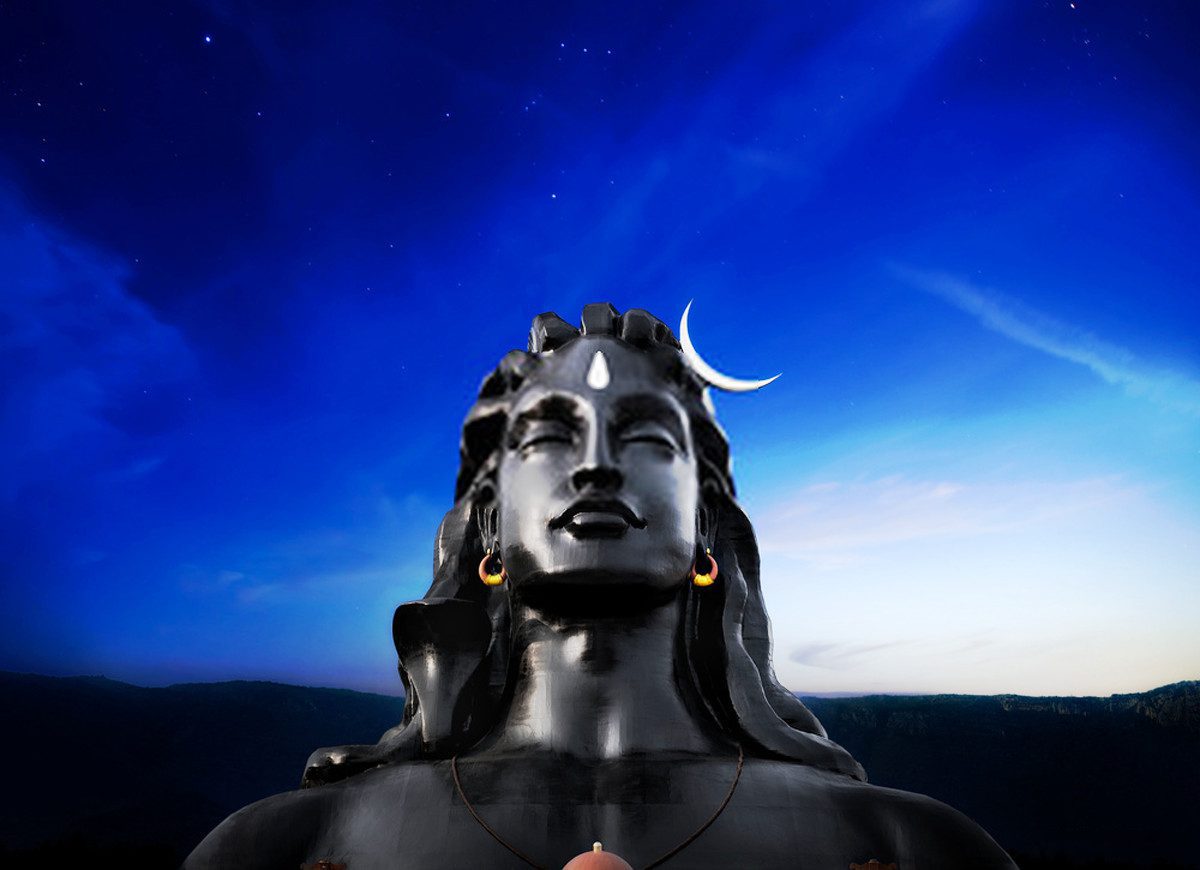Did you know that Shivaratri falls once every month in every lunisolar calendar month of the Hindu calendar on either the 14th or 15th day?
Yes, Shivaratri is not observed only once in a year, rather it falls on every month of the year on different dates and it is called Masik Shivaratri.
But there is only one Maha Shivaratri, which falls in late winter just before the arrival of spring, which marks the Maha Shivaratri or “the Great Night of Shiva” in the month of February or March.
Maha Shivaratri 2021 date: The Festival of Maha Shivaratri 2021 will be celebrated on Thursday, 11 March
Maha Shivaratri the Night of Shiva
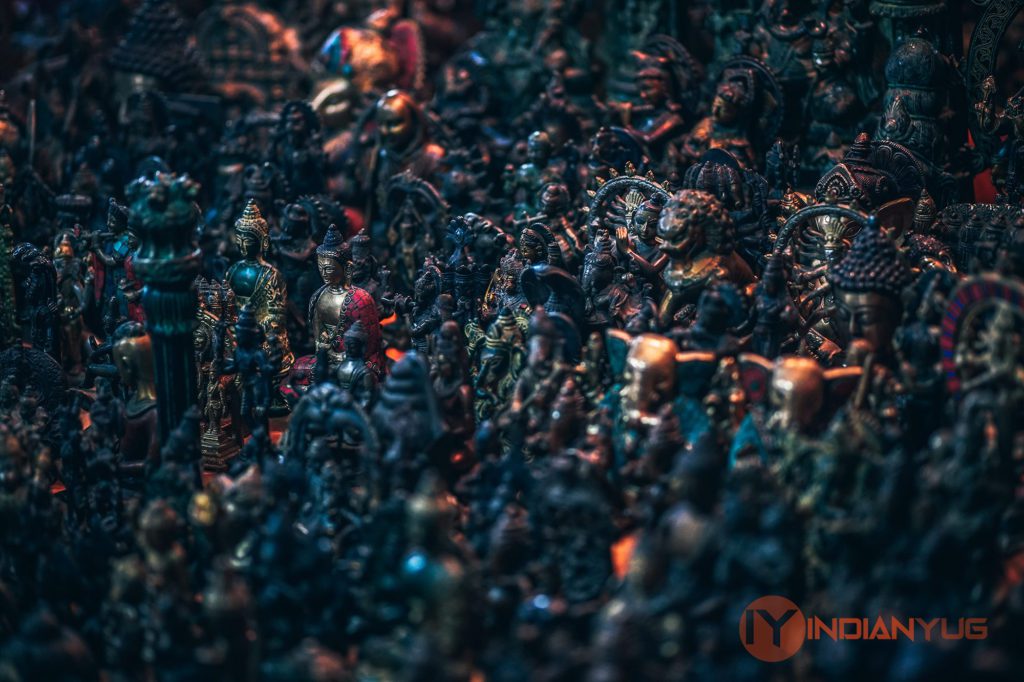
Shivratri means ‘night of Shiva’ and Maha means great in Sanskrit. The Maha Shivratri is the grand and great night of Shiva. It is primarily a Hindu religious festival that is celebrated by Hindus in India, Nepal, Indonesia and Hindus residents across the world.
Unlike most other Hindu festivals which are celebrated during the day, the Maha Shivaratri is celebrated at night.
While Hindu festivals which include expression of cultural revelry, the Maha Shivaratri is a solemn event notable for its inward focus, fasting, a meditation on Shiva, self-reflection, social harmony and an all-night vigil at Shiva temples.
You May Also Like: 10 Amazing Stories about Lord Shiva
About Lord Shiva
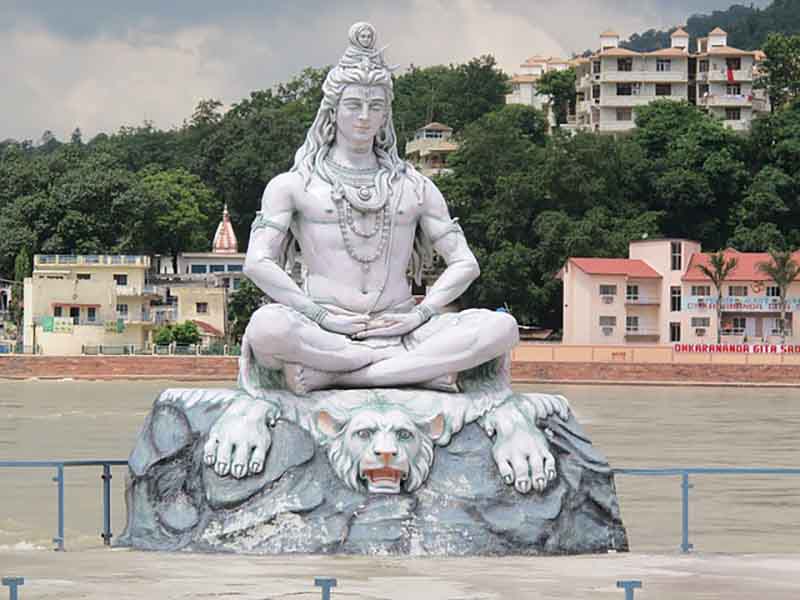
Shiva (Sanskrit: Auspicious One) is one of the main deities of Hinduism, who is worshiped as the major God by the Shaivaite sects in particular and other Sects of Hindus across the world.
In Hinduism, Lord Shiva is regarded as the representation of the Supreme Being. He is known as the third element in the Hindu Trinity of Supreme God(Trimurti), the other two members being Lord Brahma – the creator and Lord Vishnu – the protector.
Shiva is the destructive form of the Almighty. As the cycle of creation, destruction, and recreation is always in a circle, Shiva’s primary responsibility is maintaining the life cycle.
Theologists say, that its the Shiva’s Mahakaal Roop (Destroyer Representation) that destroys the world into oblivion, but as Shankara, he also recreates the cosmos from nothingness. His symbol of Lingam or the phallus represents his power to create.
You May Also Like: Shiva Lingam, The Origin, and Reason Why Lord Shiva is worshipped in This Form
Lord Shiva’s Family
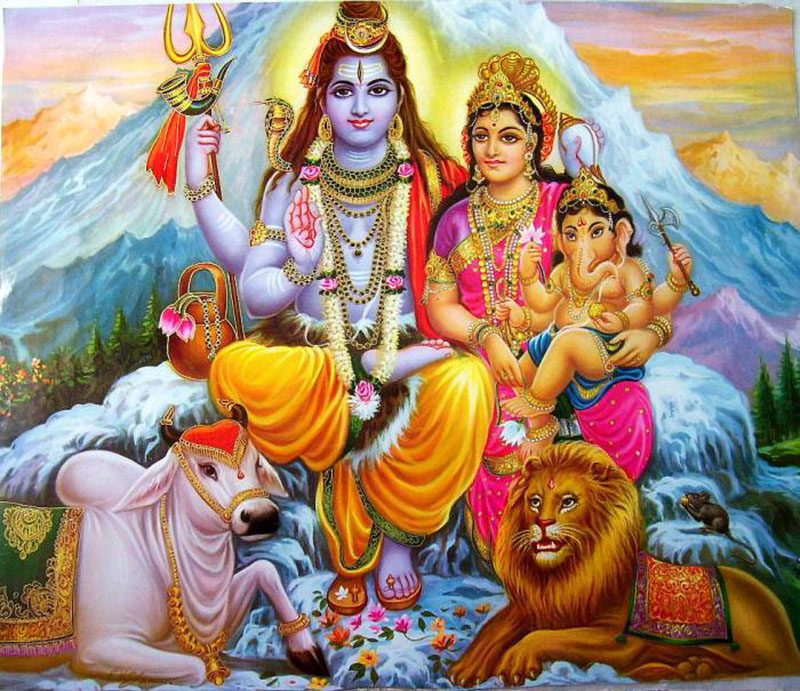
Parvati is the wife of Lord Shiva. She is the daughter of mountain king Parvat and mother Mena. Parvati is the mother of Hindu deities Ganesha and Kartikeya.
Her elder sister is the goddess Ganges. Some communities also believe her to be the adopted sister of Vishnu.
Lord Shiva General Appearance- Iconography
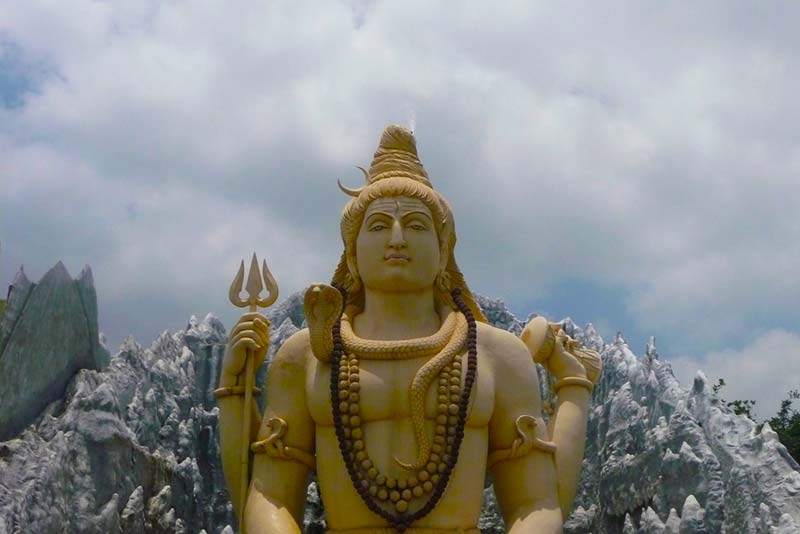
The Third eye on his forehead, the snake Vasuki around his neck, the adorning crescent moon, the holy river Ganga flowing from his matted hair, the Trishula as his weapon and the Damaru as his musical instrument.
Lord Shiva is usually worshiped in the aniconic form of Lingam (pic below.)

Different other forms of Lord Shiva
1. Shiva as Ardhanareeswara
In this form, Lord Shiva is said to be half man and half woman. In the full figure of Shiva, the male and female principles are united. Shiva Linga – the symbol of Lord Shiva which consists of both Lingam (phallus) and yoni (the female organ) represents the totality of his nature and the totality of all created existence.
Appearances and representations of Lord Shiva
2. God Natraj dancing to the rhythm of creation

Lord Shiva is shown either in meditating or a dancing form where his dance is to the beat and rhythm of creation. He is also shown in sculptures with many hands. One pair of hands, for example, represents the balance between life and death.
3. Trinetra – Neel Kantha
Shiva is also shown as ′tri netra′ or three-eyed, and is ′neela kantha′ – blue-necked (Refer Samudramanthan). Besides, there are a lot of many attributes associated with Lord Shiva.
Here is a brief description of some of the important symbols that depict Lord Shiva. Each of his depiction signifies a different aspect of his Supreme Being.
You May Also Like: Origin and Meaning of Shiva as Nataraja the Lord of the Dance
4. Unclad body covered with ashes
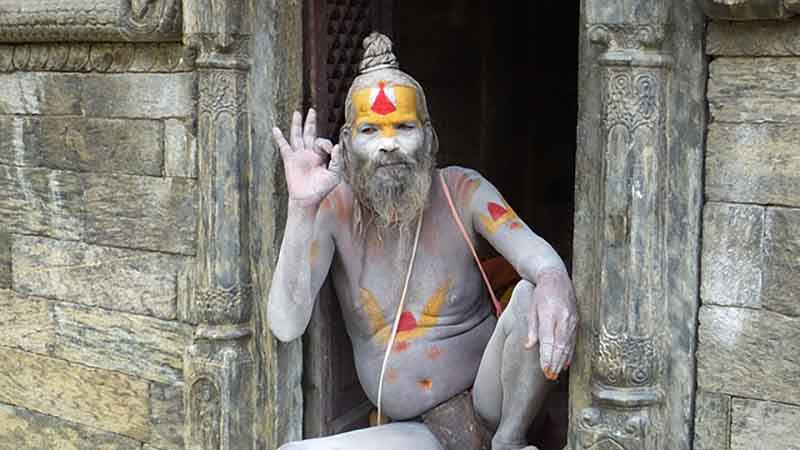
This form of Lord Shiva depicts that Lord Shiva’s presence is much higher than this Physical and material appearance. According to some scholars, Shiva’s body smeared with cemetery ash points to the philosophy of life and death and the fact that death is the ultimate reality of life.
Why is Maha Shivaratri Celebrated
There are many legends and no single legend can conclusively establish the exact reason of this tradition of celebration of Maha Shivaratri. Some of the most important legends are listed below
1. Lord Shiva saving the earth from destruction
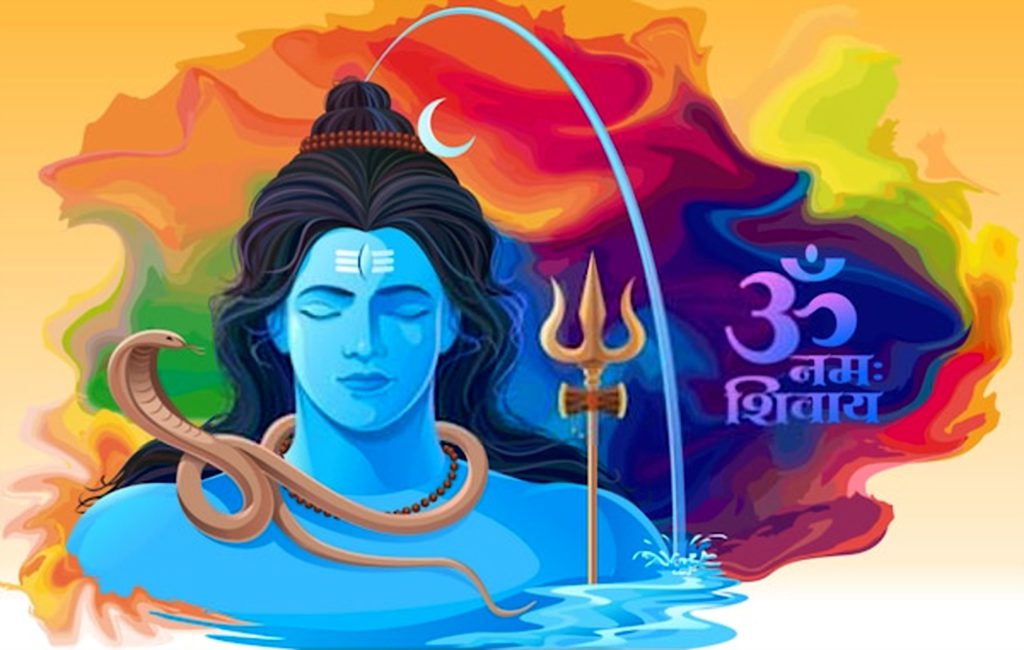
After the Earth was faced with imminent destruction, Goddess Parvati pledged with Lord Shiva to save the world.
She started praying till Lord Shiva was pleased with her devotion agreed to save the world with a condition that the people of the planet earth will have to worship him with dedication and passion.
It is from that day onward, the night came to be known as Maha Shivratri and people began worshiping Shiva with full devotion.
2. Yogic Tradition and Mount Kailash
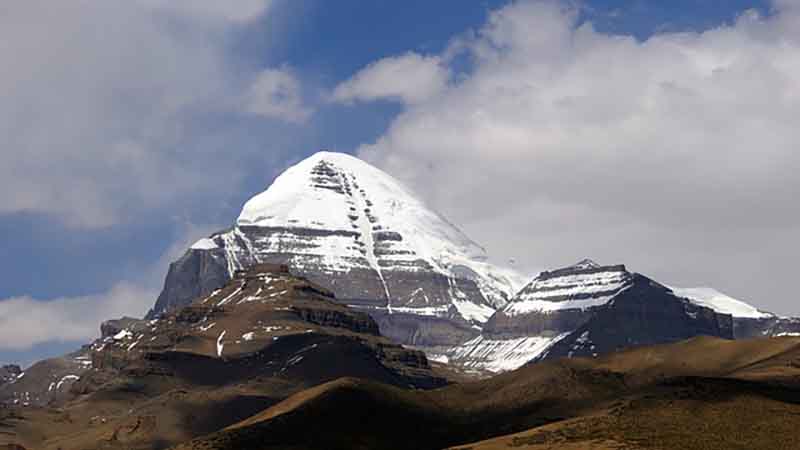
Ascetics believe it is the day he became one with ‘Mount Kailash’ a mountain frozen in time for eternity. In the yogic tradition, Shiva is not worshiped as a God, but considered as the Adi- Guru (First Spiritual Teacher), a Guru from whom the knowledge itself had originated.
After many millennia in meditation, one day Lord Shiva absolutely still. That day is celebrated as Maha Shivratri. Ascetics see Maha Shivratri as the night of stillness.
3. Lord Shiva drinking poison during Samudra Manthan
During the ‘Samudra Manthan‘(churning of the ocean) an event according to Indian ancient text Puranas, a pot of poison emerged from the ocean. This terrified the Gods and demons as the poison was capable of destroying the entire world, and they ran to Shiva for help.
To save the world from its evil effects, Shiva drank the deathly poison but held it in his throat instead of swallowing it. This made his throat turn blue, and he was given the name Neelakantha, the blue-throated one. Shivaratri is the celebration of this event in which Shiva saved the world.
4. Brahma and Vishnu Battle
According to another legend in the Shiva Purana, once the other two of the triads of Hindu Gods, Brahma, and Vishnu, were fighting over who was the superior of the two.
Horrified at the intensity of the battle, the other gods asked Shiva to intervene. To make them realize the futility of their fight, Shiva assumed the form of a huge column of fire in between Brahma and Vishnu.
Awestruck by its magnitude, they decided to find one end each to establish supremacy over the other. Brahma assumed the form of a swan and went upwards and Vishnu as Varaha went into the earth.
But light has no limit and though they searched for thousands of miles, neither could find the end. On his journey upwards, Brahma came across a Ketaki flower wafting down slowly. When asked where she had come from, the Ketaki replied that she had been placed at the top of the fiery column as an offering.
Unable to find the uppermost limit, Brahma decided to end his search and take the flower as a witness.
At this, the angry Shiva revealed his true form. He punished Brahma for telling a lie, and cursed him that no one would ever pray to him. The Ketaki flower too was banned from being used as an offering for any worship, as she had testified falsely.
Since it was on the 14th day in the dark half of the month of Phalguna that Shiva first manifested himself in the form of a Linga, the day is especially auspicious and is celebrated as Mahashivaratri. Worshipping Shiva on this day is believed to bestow one with happiness and prosperity.
How is Maha Shivaratri celebrated

Maha Shivaratri is all-night worship. The legend associated with a story where a poor tribal man who was great devotee of Shiva went deep into the forest to collect firewood.
However, he lost his way and could not return home before nightfall. As darkness fell, he heard the growls of wild animals. Terrified, he climbed onto the nearest tree for shelter till day-break. Perched amongst the branches, he was afraid he would doze and fall off the tree.
To stay awake, he decided to pluck a leaf at a time from the tree and drop it, while chanting the name of Shiva. At dawn, he realized that he had dropped a thousand leaves onto a Linga to keep himself awake, the tribal plucked one leaf at a time from the tree and dropped it below which he had not seen in the dark. The tree happened to be a wood apple or bel tree.
This unwitting all-night worship pleased Shiva, by whose grace the tribal was rewarded with divine bliss. This story is also recited on Mahashivaratri by devotees on fast. After observing the all-night fast, devotees eat the Prasad offered to Shiva.
There is another possible reason for the origin of the all-night worship. Being a moonless night, people worshiped the god who wears the crescent moon as an adornment in his hair, Shiva. This was probably to ensure that the moon rose the next night.
Immediately after Mahashivaratri, almost like a miracle, the trees are full of flowers as if to announce that after winter, the fertility of the earth has been rejuvenated. And this perhaps is the reason why the Linga is worshipped throughout India as a symbol of fertility.
The festivities differ in various parts of India. In southern Karnataka, for example, children are allowed to get into all kinds of mischief and asking for punishment is the rule of the day, probably originating from the mythological incident of Shiva punishing Brahma for lying.
[rb_related title=”You May Also Like” total=”2″]
TheVishvanatha Temple at Kashi in Varanasi celebrates the Linga (symbolic of the pillar of light) and the manifestation of Shiva as the light of supreme wisdom.
The Puja Rituals and Significance
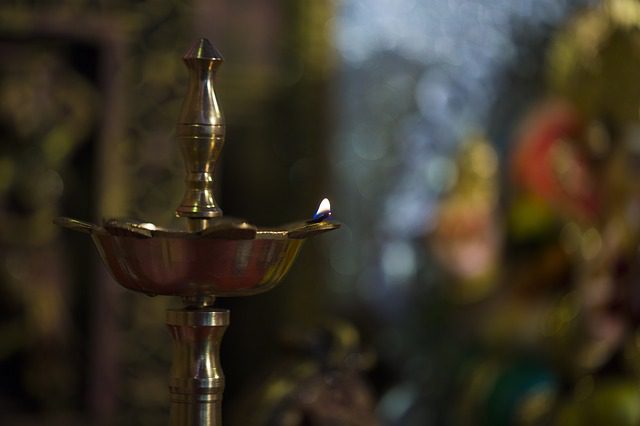
Bathing the Linga with water, milk, and honey, and Wood apple or bel leaves added to it, representing purification of the soul;
- The vermilion paste applied on the linga after bathing it, representing virtue;
- An offering of fruits, which is conducive to longevity and gratification of desires;
- Burning incense, yielding wealth;
- The lighting of the lamp which is conducive to the attainment of knowledge;
- And betel leaves marking satisfaction with worldly pleasures.
These six items, till today, form an indispensable part of Mahashivaratri, whether a simple ceremony at home or grand temple worship. By offering water, hugging the Linga, lighting the Diya and incense, and ringing the temple bells, devotees call To protect the world from annihilation.
Maha Shivaratri is thus not only a ritual but also a cosmic definition of the Hindu universe. It dispels ignorance, emanates the light of knowledge, makes one aware of the universe, ushers in the spring after the cold and dry winter, and invokes the supreme power to take cognizance of the beings that were created by him.
